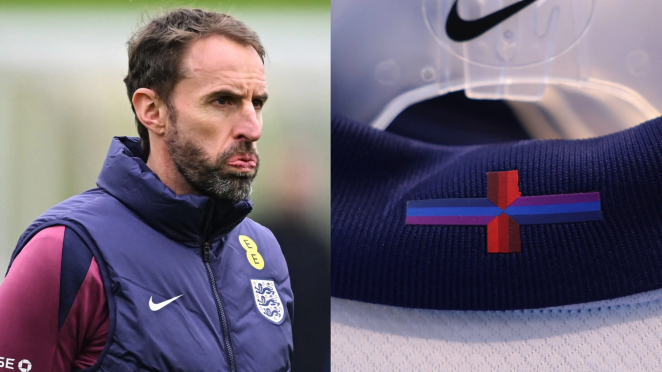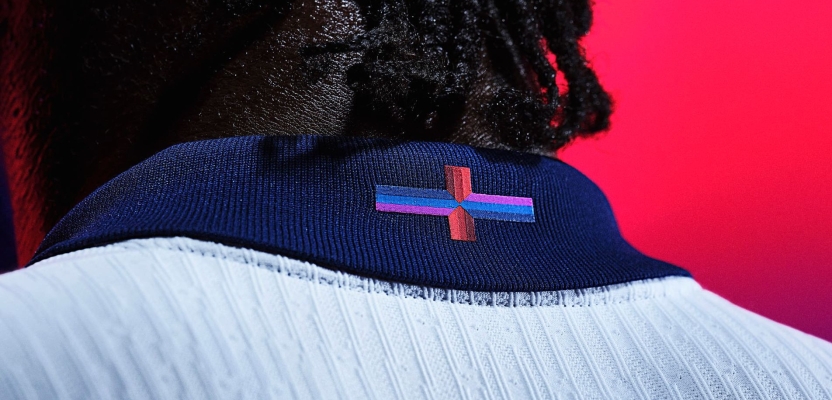As creatives, we’re always treading a fine line between letting our creative souls run free and pleasing not only our clients but our audiences. Never is this more apparent than when a piece of creative stirs controversy and we’re forced to ask ourselves if any piece of work is good enough to be worth upsetting people.
Of course, the other side of the argument is that great art SHOULD be offensive and catalyse debate. But the piece of work I’m putting under the spotlight today was never meant to be incendiary; it was just trying to look cool.
I’m talking, of course, about the recent media uproar over Nike’s redesign of the England football kit; a seemingly innocuous idea that’s ignited a fierce debate about the delicate balance between innovation and reverence for tradition.
Nike, the sportswear giant, unveiled a “playful update” to the St. George’s Cross on England’s new home kit. What seemed like a harmless tweak soon morphed into a cultural battleground. The altered cross—no longer the familiar red but a blend of red, blue, and purple—stirred emotions, sparking a culture war that transcended football fandom. But what can we learn, as creatives, from all this noise?
The Clash of Perspectives
To say opinions diverged sharply on the design would be putting it lightly. Some hailed the fresh design as a breath of fresh air, while others saw it as borderline sacrilege—a distortion of a revered national symbol.

Dependably, the controversy rippled through social media, drawing in figures from all walks of life. Even England team coach, Gareth Southgate, found himself embroiled in the debate. His pragmatic response emphasized the iconic Three Lions emblem as the true heart of the England shirt, transcending mere colour. I’m personally inclined to agree with him but there are other elements at play here.
Design Freedom vs. Cultural Responsibility
The England kit saga underscores a fundamental tension that’s existed for as long as there have been flags and people eager to burn them to make a point: how do designers navigate the fine line between pushing boundaries and respecting cultural heritage? In my view, it’s all down to context. Creative freedom is essential—it fuels innovation, drives progress, and is behind all of the most iconic designs you could care to mention.
However, when we’re talking about a brand with a global audience, not an artist making a political point, it must coexist within the spectrum of cultural awareness, otherwise it could end up accidently making a statement. When working with these brands, designers must tread carefully, acknowledging that symbols carry weight beyond simple aesthetics.
The Broader Canvas
Of course, this is far from an isolated incident. Back in 2018, for example, the Italian owner of Leeds United decided to replace the iconic white Yorkshire rose design of the logo with a man thumping his chest. It caused a major backlash, and the design was initially scrapped. In this case, however, there’s been almost a case of reverse cultural appropriation that’s really irked some corners of the internet.

Moving forward, there’s a worry that the tension caused by this debacle could lead to more cautious design approaches going forward, especially when dealing with national symbols and major brands. Like it or not, it’s an event that will serve as a reminder, going forward, that creative expression exists within a complex social landscape, where public sentiment can significantly influence acceptance.
The moral here? Don’t let potential future censorship hold back your ideas by any means, but if you’re not trying to make a statement, do your homework. Otherwise you could end up accidently aligning your brand with something that completely undermines it.




